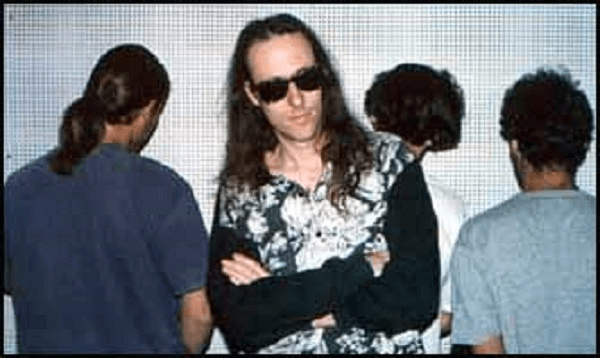KILL AND LET LIVE
The fiery killer
KILL AND LET LIVE

KILL AND LET LIVE
It was not easy to find a place for us to appear. The unruly image we created in the media - remember, even before we even got the shelter - caused the few club doors in town to shut us in the face. Even within the band it was not easy. Dekel and I got along fine, and to this day, 25 years later, we remain good friends. The hard core also included Johnny Ix, and besides us, the cysts, guitarists and keyboards changed at a dizzying pace. Nobody matched us head and direction.
Even with Johnny, not everything went smoothly. As in a romantic triangle, it turned out not to be simple. He insisted on performing mainly punk and rock hits. Palm and I only clicked on original material. In the end, we compromised - we played cabs too, but with different processing than the original, and in some of the songs we performed obscene acts like additions and changes compared to the original structure, and translation into Hebrew as our best imagination.
In our versions of Ziggy Stardust, who transcended the guitar, Johnny B. Goode became an advertisement for a crazy fashion store called "Johnny Clothing," "Burning London" by the Clash became a "silk-and-blemish haifa" and the like. In truth, it was amusing to Allah. We most loved performing the Stones I Can Get No Satisfaction with a horny version of vocal and musical orgasms. In our performance, by the way, even the most pop songs got punk-rock roughness.
Looking back, Johnny X was right. It was idiotic to perform with material no one knew, although most of the songs were very catchy. The cabaret, whose dose increased over time to half the repertoire, provided the audience with tunes that could be sung, jumped with, screamed. And everyone was surprised and enjoyed hearing our crazy versions.
The first performance took place on the street. We took power cables to the parking lot next to my house, built a raised platform for drums, and connected men. The casual crowd that gathered around us was made up of high school students coming out of the two nearby schools (Urban Hashem and circles) and just passing through.
For the segment, we asked a friend to pass with an upside-down hat among the people in the audience. Those who enjoyed being asked to donate something, those who did not like - were asked to take a coin from the hat as compensation. We covered the best we could, but these were personal amplifiers, limited in intensity, and the sounds scattered in the open space.
Bottom line, it wasn't that bad, and our street shows have become a tradition. On regular days, during regular hours, we would ask some neighbors to clear their cars from the private parking of the building, and hit a show. Soon fans started coming in, and we became true fans.
Over time, we also made appropriate decor: black giant sheets, with Keeler's skull icon in white. We got out of the house made and equipped, and we felt America. We were called twice by police, but we were only asked to fold away without problems.
Then came the first paid gig. It started as a joke, and it went on like that. A friend of mine recommended us in a nursing home in the Ahuza neighborhood. He of course portrayed us and our music in kind and harmless shades. He introduced himself as our promoter and closed with them for a price.
On the evening we arri